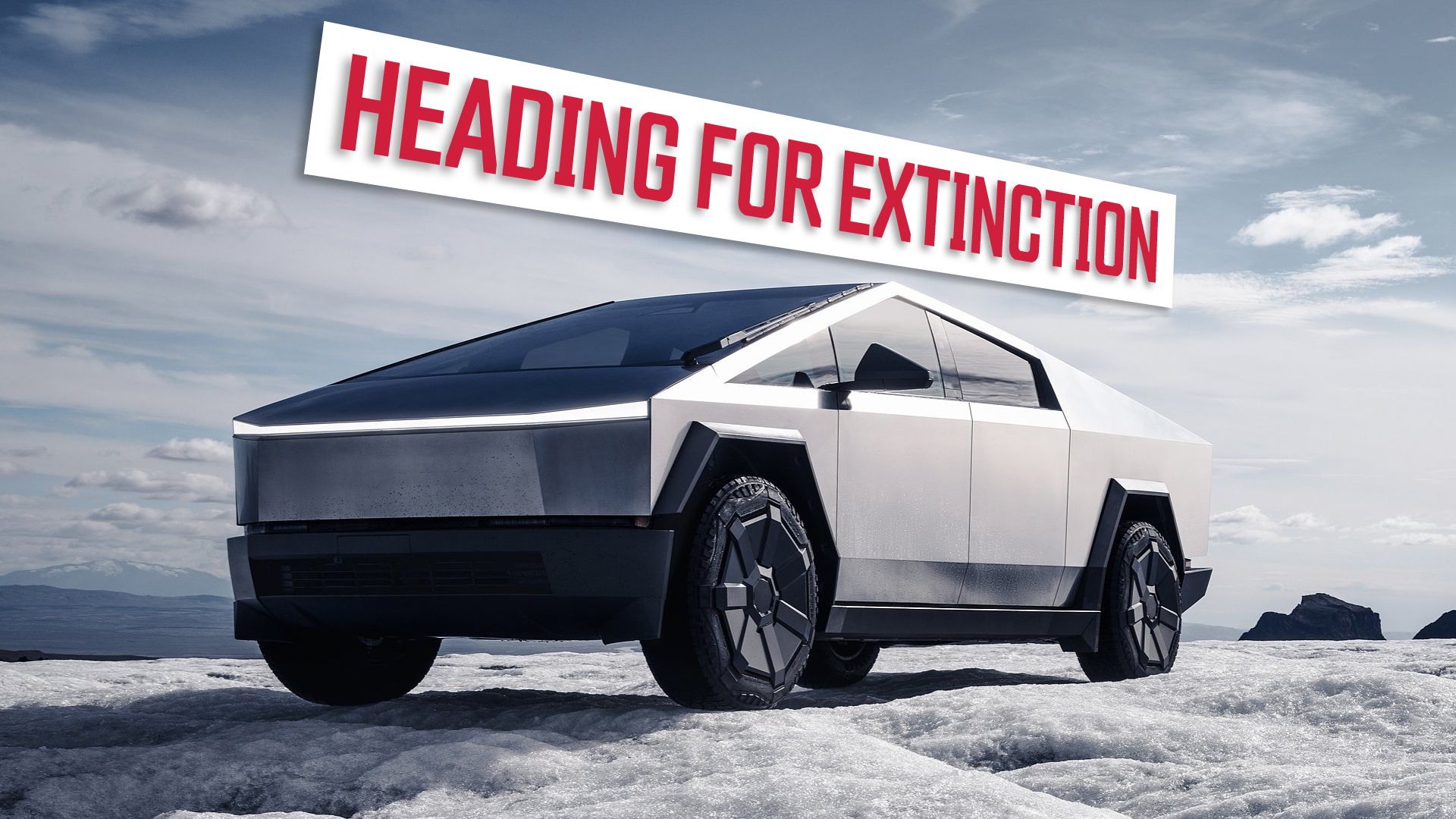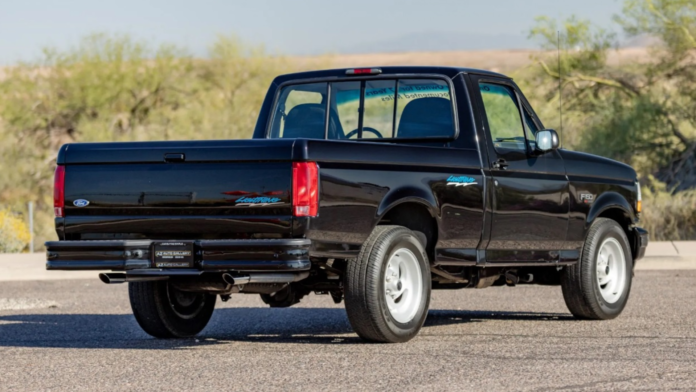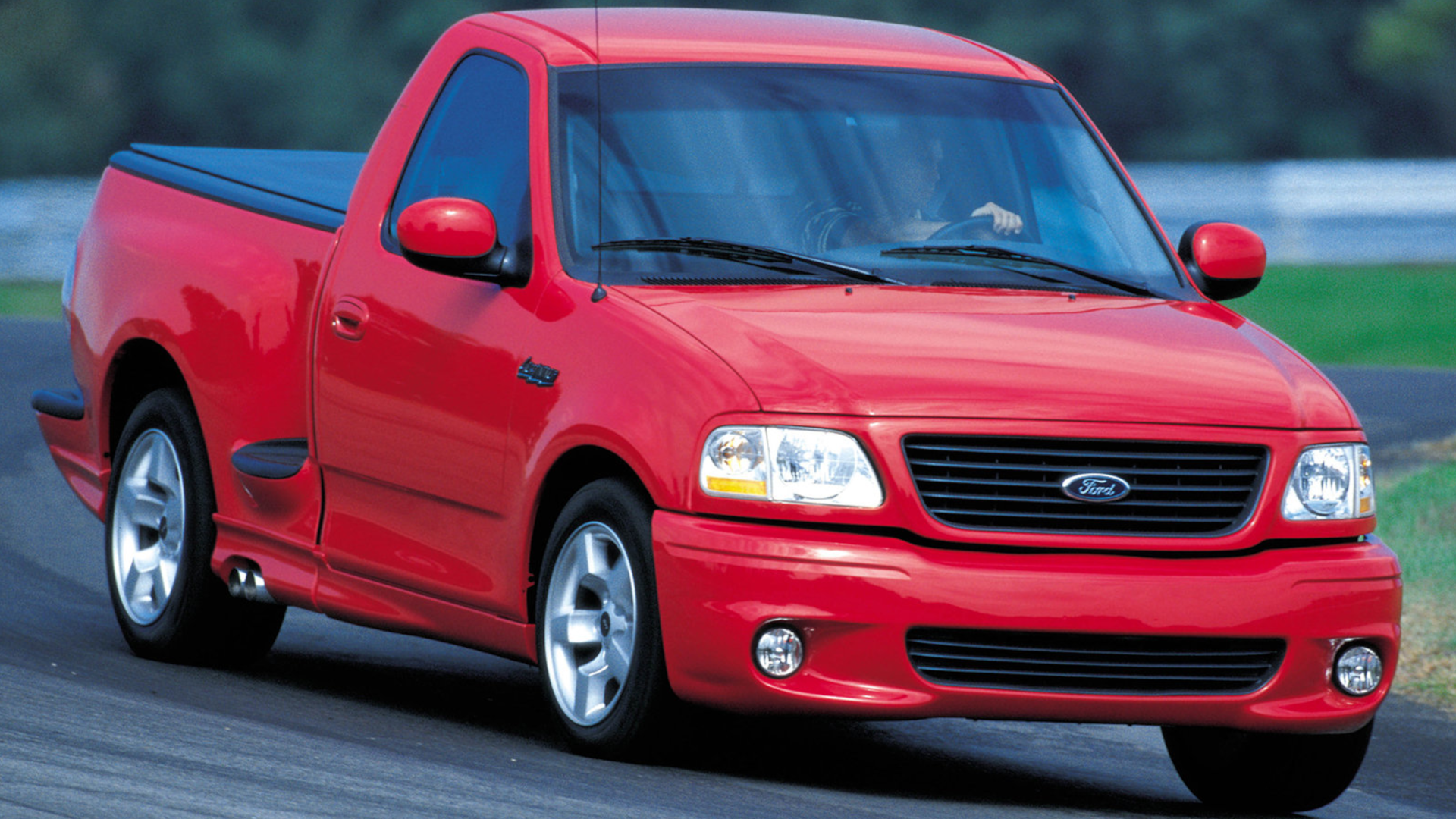In the 1990s, Chevrolet did something the mass-market world had never seen on a large scale. It took a run-of-the-mill Chevrolet C1500 pickup truck and shoehorned a massive, 454 CID V8 under its hood. Their creation was called the Chevrolet 545 SS, and with its 230-horsepower output, was one of the fastest trucks you could buy in 1990s, right up there with the GMC Syclone.
Then, in 1993, Ford, deciding they wouldn’t be out-done like that, decided to create their own sporty, go-faster pickup truck. The creation was dubbed the F-150 Lightning, and it largely followed the same recipe as Chevy’s 454 SS. However, unlike the Chevy, the F-150 Lightning ended up creating a legacy which, at the time of its creation, would have been described as sci-fi nonsense.
The First Ford F-150 Lightning In All Its Single-Cab Glory
First-Gen F-150 Lightning Fast Facts
- Produced from 1993 to 1995
- Approximately 11,563 first-gen Lightning models were built
- Utilized a tuned version of Ford’s 5.8-liter V8
- Its handling was tuned in part by racing legend Jackie Stewart
In addition to competing with their arch-rival, Chevrolet, Ford was also looking for a way to improve the Ford F-150’s reputation. To accomplish this, the team responsible for the Ford F-150 concluded that a sporty truck was in order. So, to turn their idea into a reality, Ford created the now-defunct Special Vehicle Team (SVT) to help build the incoming Lightning. Work on the project began in mid-1991.
By late 1992, the Ford F-150 Lightning was ready to take to the streets. Then-Ford president Ed Hagenlocker personally revealed the F-150 Lightning in an event held on December 15, 1992, and the Lightning was an immediate success. Over 150 positive articles were written about the new Lightning in newspapers across the US, and Ford made sure to secure loads of air time on American television for the Lightning. These efforts and public praise ensured Ford’s place as America’s number one truck remained.
To ensure the new Lightning was taken seriously, its handling prowess was held in high regard by the Special Vehicle Team. Handling was of so much importance, Ford hired racing legend Jackie Stewart to work closely with the folks at SVT to develop the Lightning’s handling and overall feel. Along with this, the SVT team fitted the Lightning with a 4:10.1 gear ratio for better acceleration, heavy-duty shocks and springs, and anti-roll bars. It was also lowered by one inch in the front and 2.5 inches in the back.
|
1995 Ford F-150 SVT Lightning Specs |
|
|---|---|
|
Engine |
5.8-Liter SVT-Tuned Windsor V8 |
|
Horsepower |
240 hp @ 3,600 rpm |
|
Torque |
340 lb-ft @ 2,800 rpm |
|
0-60 MPH Time |
7.2 Seconds |
|
1/4 Mile Time @ MPH |
15.6 Seconds @ 87.4 MPH |
|
Top Speed |
110 MPH (Limited) |
Over the course of 1993, 1994, and 1995, Ford managed to shift 11,563 F-150 Lightnings. Ford then announced the Lightning would be discontinued. Not due to poor sales, but because the updated, 10th-gen F-150 was to be introduced soon, meaning the Lightning would need to be done away with. However, Ford wasn’t done with the Lightning name yet, as the world would soon find out some four years later.
Lightning Never Strikes The Same Place Twice…
…But it did. Just four years after the cancelation of the first F-150 Lightning iteration, Ford decided to bring it back with a lot more oomph hiding under its hood. Along with its drastically-altered looks, the new SVT Lightning also went about things a bit differently, as well. Instead of using an F-150/F-250 hybrid chassis like the first-gen SVT Lightning did, the second-gen utilized an unaltered F-150 chassis in its entirety.
Ford’s Special Vehicle Team put a little bit more work into the engine than they did the rest of the truck. Unlike its naturally-aspirated predecessor, the second-gen SVT Lightning came equipped with an Eaton M112 supercharger. As you can imagine, the addition of a supercharger took the Lightning from just a blip on the radar to a severe thunderstorm warning, to put it in the most corny way possible.
|
2004 Ford F-150 SVT Lightning Specs |
|
|---|---|
|
Engine |
5.4-Liter Supercharged V8 |
|
Horsepower |
380 hp @ 4,750 rpm |
|
Torque |
450 lb-ft @ 3,250 rpm |
|
0-60 MPH Time |
5.2 Seconds |
|
1/4 Mile Time @ MPH |
13.9 Seconds @ 100.0 MPH |
|
Top Speed |
148 MPH |
In addition to its forced induction, SVT also outfitted the second-gen Lightning with kit such as a 4R100 four-speed automatic transmission. It was taken out of the Ford Super Duty and installed to better cope with the power produced by the blown 5.4-liter V8. The Lightning was also lowered one inch in the front and two in the back to help lower its center of gravity and improve handling. Larger, 18-inch wheels were fitted, along with directional tires for improved grip.
Over the span of five years, the second-gen Ford F-150 SVT Lightning sold relatively well. In the end, approximately 28,124 examples were produced and sold before its axing occurred in 2004.
The Lightning Was Resurrected Again For A Different Purpose
After an 18-year hiatus, the automotive world was alerted to the third return of the Lightning namesake. However, this time, things would be vastly different. The Lightnings of the past, which featured specially-tuned, roaring V8s coupled with shortened gear ratios and lightweight, single-cab bodies, would be no more. Instead, the Lightning name would now be carried forward on the proverbial back of an electric vehicle.
In May 2021, the new Ford F-150 Lightning was unveiled. Hitting the market as a 2022 model year, the new Lightning looked to be positioned at an excellent point in the market. Not only would it be America’s first electric pickup, it would also be the first electric truck produced by a legacy automaker on a massive scale in the entire world. In short, the new Lightning had quite a lot going for it, but it has to be said that the Rivian R1T beat it to the market. Ford announced several iterations of the Lightning would be made from the base-model, fleet-only “Pro” version all the way up to the top-end Platinum Black trim, with four in between as of this year.

Related
Why The Electric Truck Segment Is Bound To Implode
Our thoughts on why electric trucks are just not sustainable right now.
Unfortunately, the current Ford F-150 Lightning has been plagued with several issues. It’s been the subject of several recalls, including one which involved the Lightning’s high-voltage battery pack that increased the risk of fire, although only 216 Lightnings were affected by this particular recall. It also seems to be very hard for Ford to sell Lightnings, as many people are cooling to the idea of electric vehicles these days for a multitude of reasons. Ford recently announced they’ve slashed production of the Lightning, with a stop-production order even being issued from November 18 of this year to January 6 of 2025, in order to sort out excess inventory.
In all honesty, and despite its challenging start, choosing to use the Lightning name on an electric truck was, in our opinion, a smart thing to do. While it’s easy to hum and haw over the re-branding of a legendary truck, the world has moved onto more pressing and electrified matters, for better or worse. This way, Ford can walk into the future with a name that brought many gearheads joy in the past.

Add CarBuzz to your Google News feed.
Sources:
Hemmings.com
,
Performance.Ford.com
,
TheDrive.com


